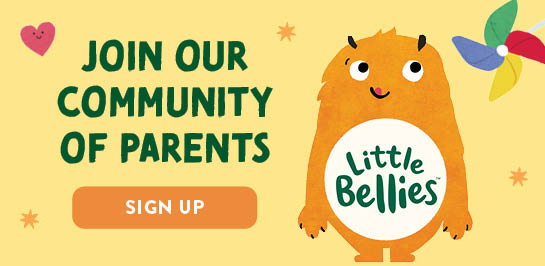Baby Teething: Signs, Symptoms and Remedies
Reading time: 3 min
Reading time: 3 min

Teething is an exciting yet sometimes challenging milestone for both babies and parents. When babies start to teeth, they experience pain and discomfort from sore, inflamed gums. This can lead to excessive drooling, crying, and disrupted sleep.
As a parent, when you see your little one in pain, your instinct is to do everything in your power to make them feel better. But how do you know if teething is to blame? And what teething remedies work?
This comprehensive guide covers everything you need to know about spotting teething symptoms and using natural remedies to help soothe your baby’s sore gums.
Teething occurs when a baby’s teeth begin pushing through the gums as they enter the mouth. This typically begins around 6 months of age. That said, some babies may start teething as early as 3 months or as late as 1 year.
During teething, the gums become inflamed and tender or sore as the emerging teeth press against them.
It’s important to understand that primary teeth, also called baby or milk teeth, are different from permanent adult teeth. Babies have 20 primary teeth which emerge in pairs usually starting with the two bottom front teeth.
Teething continues until around age 3 when the full set of baby teeth will have emerged. These teeth eventually fall out and are replaced by permanent teeth starting around age 6.
How do you know if your baby is teething?
Since babies cannot communicate with words, it’s up to parents to identify teething symptoms. Here are some of the most common signs to look out for:
Teething can cause discomfort, but serious symptoms like high fever, diarrhoea, or vomiting warrant a call to the paediatrician.
Also, while symptoms tend to flare up in cycles as teeth emerge, they resolve once new teeth break through the gums. If signs persist beyond a few days with a tooth, talk to your paediatrician.
Teething occurs in stages as different teeth emerge. Luckily, there are predictable patterns to how primary teeth come out, which aids in identifying teething stages:
The two bottom front teeth typically come out first around 6-12 months. During this stage, babies may drool, chew their fists, and become fussy.
Next, the four upper front teeth emerge. Teething pain may peak at this point as the sharp edges of the teeth cut through the gums. Between 10-16 months the two lower lateral incisors emerge beside the bottom central pair.
The upper and lower side teeth come out next. Babies may have sore cheeks and ears as these teeth erupt. Expect the lower first primary molars at 18-24 months and the upper first primary molars at 24-36 months.
During this stage, the lower and upper second primary molars emerge. There are a total of four first molars. Getting these larger teeth out can be extremely uncomfortable.
There are many natural ways to help your baby. Always supervise babies closely when using any teething remedies.
Chilled Teething Toys
Gum Massage
Cold Foods and Teething Rusks
Hydration
Sometimes, calming a baby experiencing teething pain extends beyond the mouth. Provide your little one with a comforting warm bath. This can alleviate their physical discomfort and serve as an enjoyable diversion.
Be careful with anything that has not been specifically designed and approved to soothe or numb teething pain in babies. If your baby is in a lot of pain and distress, you might want to consider a sugar-free painkilling medicine. Talk to your child’s paediatrician regarding the appropriate use of pain relief medication.
While teething can be painful, it does not make babies sick. So, consult your paediatrician if your baby has some or all of the following:
While teething can be stressful, remember you will get through it. Before you know it those sweet baby teeth will fully emerge.
Going through the teething process with your little one can be challenging. But it can also be filled with significant rewards. Seeing those first pearly whites poke through red, swollen gum is a proud milestone that marks your infant’s transition into the toddler stage.
Patience and attentiveness to symptoms are key during the teething phase. By identifying emerging teeth early and applying promptly the soothing techniques we’ve talked about, you can minimize discomfort and frustration for your little one.
Always speak with your paediatrician if you have any concerns about atypical symptoms or development.
Trust your instincts, respond with empathy when teething flares up, and take advantage of solutions that bring relief. Although teething is temporary, it sets the stage for a lifetime of smiles and dental health as your baby matures. Good luck!
Teething: Photo by Shalev Cohen on Unsplash

Get the latest news on parenting tips, food play hacks, promotions and giveaways!
Subscribe Now